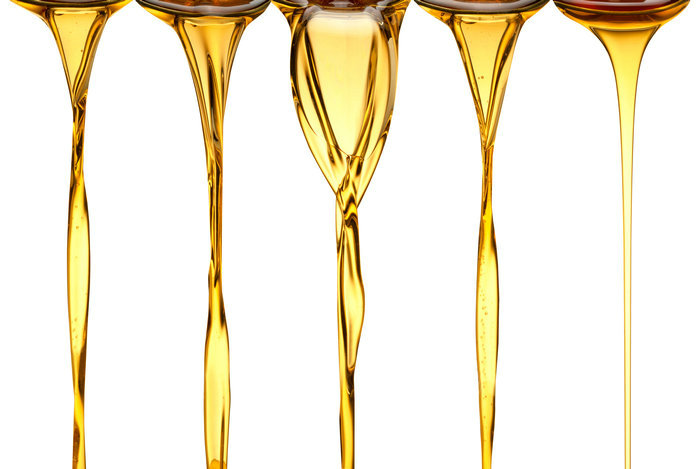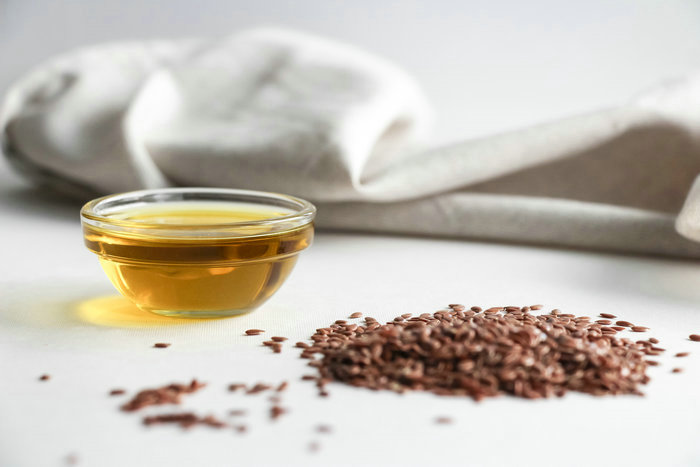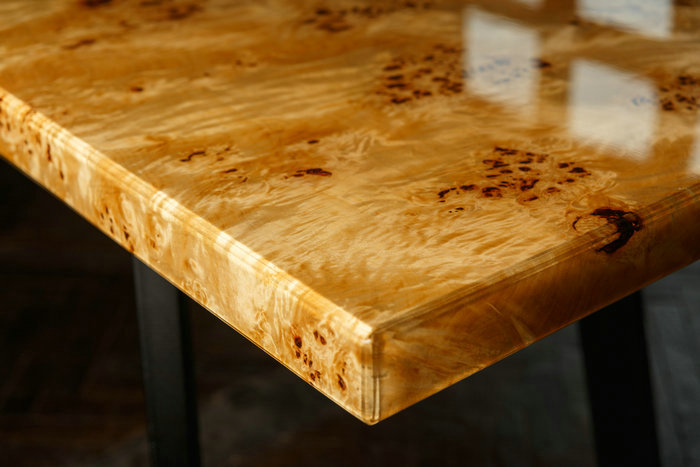Introduction
When it comes to wood finishes and coatings, Tung oil and Linseed oil have been two popular choices for centuries. These natural oils offer a range of benefits and are known for their ability to enhance and protect wood surfaces.
This article will explore the origin, history, properties, uses, and differences between Tung oil and Linseed oil, shedding light on their unique characteristics and applications.

Understanding Tung Oil
Tung oil is a drying oil that polymerizes when exposed to air, forming a protective film on the wood surface. This natural polymerization process results in a durable and water-resistant finish.
Tung oil is known for its rich golden color and ability to enhance the natural beauty of the wood grain. It provides excellent protection against moisture, UV rays, and heat, making it a popular choice for exterior wood applications.
Definition and Uses
Tung oil is often used as a finish for wooden furniture, floors, decks, and outdoor structures such as fences and boats. Tung oil can be applied directly to the wood surface or mixed with other finish to create a more durable coating. Its water-resistant properties make it suitable for marine applications.

Varieties Related to Tung Oil
Several Tung oil alternatives are available in the market, including pure Tung oil, polymerized Tung oil, and Tung oil blends. Pure Tung oil is the least processed form from the Tung tree, while polymerized Tung oil undergoes additional treatment to accelerate the drying process and improve durability.
Tung oil blends often combine Tung oil with other oils or resins to enhance specific characteristics.
Understanding Linseed Oil
Linseed oil is known for its excellent penetration properties, allowing it to seep deep into the wood fibers and provide long-lasting protection. Linseed oil, like Tung oil, is also a drying oil that forms a protective film on the wood surface as it cures. It has a pale yellow color and a slightly nutty aroma.

Definition and Uses
Linseed oil is widely used in woodworking, particularly for interior applications. It is commonly used as a wood finish, providing a natural and warm appearance to the wood. Linseed oil is also used to produce paint, varnish, and stains.
It can be mixed with other solvents or resins to create different finishes and enhance durability.
Varieties and VOCs (Volatile Organic Compounds) Related to Linseed Oil
Linseed oil comes in various forms, including raw-linseed oil. Raw linseed oil is unprocessed and takes longer to dry, while boiled linseed oil has been heated and treated with drying agents to accelerate the drying process. Boiled linseed oil is commonly used in woodworking due to its faster drying time.
It’s important to note that linseed oil, particularly the boiled variety, can release volatile organic compounds (VOCs) during drying. VOCs are chemicals that can adversely affect air quality and human health. Proper ventilation is essential when working with linseed oil to minimize exposure to these compounds.
Tung Oil vs. Linseed Oil: How Do They Differ?
1. Appearance
One of the primary differences between Tung oil and Linseed oil is their appearance. Tung oil enhances the natural color and grain of the wood, providing a warm, amber-toned finish. In contrast, Linseed oil imparts the wood a slightly paler, yellowish hue.
Both Tung oils and Linseed oil offer excellent protection to wood surfaces. However, there are a few notable differences between them.
2. Drying Time
Tung oil generally dries slower than Linseed oil, which can be an advantage for projects requiring more working time or achieving a smoother finish.
3. Durability
Tung oil is known for its exceptional durability and resistance to moisture, heat, and UV rays. It forms a tough, protective layer on the wood surface. Linseed oil is also durable but may not offer the same water and heat resistance level as Tung oil.
4. Application
Tung oil is often applied in thin coats, allowing it to gradually penetrate the wood and build up layers. Linseed oil, on the other hand, is typically applied more generously to saturate the wood fibers.
5. VOCs
While both oils can emit VOCs during the drying process, linseed oil, especially the boiled variety, tends to have a more pungent odor and release a higher level of VOCs than Tung oil.
6. Water Resistance
When it comes to water resistance, Tung oil and Linseed oil exhibit different properties. Let’s take a closer look at their water resistance characteristics.
Tung Oil: Tung oil is renowned for its excellent water resistance. It forms a protective film on the wood surface, creating a barrier against moisture infiltration. It helps prevent water absorption into the wood, reducing the risk of warping, rotting, or cracking.
Linseed Oil: Linseed oil is generally recommended for interior wood applications or areas not exposed to excessive moisture. However, if the wood surface is adequately sealed and maintained, Linseed oil can provide a reasonable level of water resistance.
7. Care and Cleaning
Proper care and cleaning are essential to maintain the appearance and longevity of wood surfaces treated with Tung or Linseed oil. Here are some guidelines for care and cleaning for both oils:
Tung Oil: To clean surfaces finished with Tung oil, mild soap, and water can be used. Regular dusting and wiping with a damp cloth are usually sufficient to maintain the shine and cleanliness of Tung oil-treated surfaces.
Linseed Oil: Cleaning surfaces treated with Linseed oil can be done with a mild detergent solution and a soft cloth. It is important to note that Linseed oil takes longer to dry.
8. Durability and Maintenance
When it comes to durability and maintenance, Tung oil and Linseed oil differ in their requirements.
Tung Oil: Tung oil is highly durable and provides long-lasting protection to wood surfaces. Once properly applied and cured, it forms a robust and resilient finish that can withstand the test of time.
Linseed Oil: While durable, it may require more frequent maintenance than Tung oil. The oil finish can gradually wear off, especially in high-traffic areas or under harsh conditions.
9. Process of Applying Both Oils
Applying Tung and Linseed oil requires careful preparation and application techniques to achieve optimal results. Let’s explore the process of applying both oils:
Tung Oil
- Surface Preparation: Ensure the wood surface is clean, dry, and free of existing finishes, dirt, or debris.
- Sanding: Lightly sand the wood surface to create a smooth and even texture.
- Application: Apply Tung oil using a brush, cloth, or sponge in thin, even coats. Allow each coat to penetrate the wood for a few minutes before wiping off any excess oil with a clean cloth.
- Drying and Curing: Tung oil takes time to dry and cure. It is essential to allow sufficient drying time between coats, typically 24 hours. Multiple coats may be necessary to achieve the desired level of protection and sheen.
- Buffing and Maintenance: Once the oil has fully cured, buff the surface gently with a clean cloth to enhance the sheen. Regular maintenance can include periodic reapplication or spot touch-ups as needed.
Linseed Oil:
- Surface Preparation: Like Tung oil, ensure the wood surface is clean, dry, and free from any previous finishes, dirt, or debris.
- Application: Apply Linseed oil generously using a brush, cloth, or sponge, ensuring the oil saturates the wood fibers. Allow the oil to penetrate for 15-30 minutes before wiping any excess with a clean cloth.
- Drying and Curing: Linseed oil takes longer to dry than Tung oil. Depending on environmental conditions, it typically requires 24-48 hours between coats. Multiple coats may be applied to achieve the desired level of protection and finish.
- Curing Time: Linseed oil can take several weeks to cure and harden fully. Avoiding excessive moisture or pressure on the treated surface during this period is essential.
- Maintenance: Regular inspections and reapplication of Linseed oil may be necessary to maintain the finish and protect the wood surface.
10. Cost
When comparing the cost of Tung oil and Linseed oil, several factors come into play, including the quality and brand of the oil, the quantity needed for the project, and the availability in the market.
Generally, Linseed oil is more affordable compared to Tung oil. However, the cost can vary significantly depending on the specific product and region.
11. Lifespan
The lifespan of Tung oil and Linseed oil-treated surfaces can vary based on factors such as the application technique, environmental conditions, and maintenance practices. Both oils offer good durability, but Tung oil is typically known for its long-lasting protection and resistance against moisture, UV rays, and heat. Tung oil finishes can last for many years with proper care and maintenance.
Pros and Cons of Tung Oil and Linseed Oil
Tung Oil

Pros: Excellent water resistance, enhances wood grain and color, durable, provides protection against UV rays and heat, low maintenance.
Cons: Slower drying time, the relatively higher cost compared to Linseed oil.
Linseed Oil
Pros: Good penetration, enhances wood appearance, easy application, affordable.
Cons: Limited water resistance, longer drying and curing time, may require more frequent maintenance.
How Long is the Drying Time for Both Products?

Tung oil generally has a slower drying time compared to Linseed oil. Depending on environmental conditions, Tung oil can take 24 hours or longer to dry between coats.
Linseed oil typically dries within 24-48 hours. It’s important to allow sufficient drying time before applying subsequent coats or subjecting the surface to regular use.
Durability and Safety
Both Tung oil and Linseed oil offer good durability, but Tung oil generally provides superior protection against moisture, heat, and UV rays.
Tung Oil: Tung oil forms a durable and water-resistant finish that can withstand outdoor conditions protecting the wood from rot, decay, and warping. It has a long history of safe use and is considered non-toxic once fully cured.
Linseed Oil: Linseed oil provides reasonable durability but may not offer the same level of water resistance as Tung oil. It is generally safe for use.
Ease of Use
Regarding ease of use, both Tung and Linseed have their considerations. Let’s discuss the ease of use for both oils:
Tung Oil: Tung oil is generally considered easy to work with. Using the proper preparation techniques, Tung oil is relatively easy to apply by brushing or wiping the oil onto the wood surface. Tung oil has good penetration capabilities, allowing it to saturate the wood fibers effectively.
Linseed Oil: Linseed oil is also known for its ease of use. It is widely available and can be easily applied using a brush, cloth, or sponge. Linseed oil has good penetration properties, allowing it to soak into the wood fibers and enhance its appearance. However, it is essential to note that Linseed oil has a more extended drying and curing time.
Sanding Over Both Oils
Sanding over Tung oil and Linseed oil can be done to achieve a smoother finish or to prepare the surface for additional coats. Here are some guidelines on sanding over both oils:
Tung Oil: When sanding over Tung oil, it is essential to ensure that it has fully cured to avoid damaging the finish. Once the Tung oil has cured, typically after several days or weeks, you can use fine-grit sandpaper (such as 220 grit) for sanding the surface lightly. This will help remove imperfections, smooth the finish, and create a better base for subsequent coats if desired.
After sanding, clean the surface thoroughly to remove any sanding residue before applying additional coats.
Linseed Oil: Similar to Tung oil, sanding over Linseed oil should be done once the oil has fully cured. Linseed oil has a longer drying time, so it is crucial to allow sufficient time for the oil to dry and harden before sanding. Use fine-grit sandpaper to gently sand the surface gently, ensuring an even and smooth finish.
Ensure to clean the surface thoroughly after sanding to eliminate any residual sanding debris before proceeding with the application of additional coats of Linseed oil, if necessary.
How to Apply Tung Oil and Linseed Oil

Tung Oil
Materials Needed
Tung oil (pure or Tung oil finish)
Applicator (brush, cloth, or sponge)
Clean, lint-free cloths
Sandpaper (if sanding is required)
Protective gloves and goggles (for safety)
Adequate ventilation
Application Process
- Prepare the wood surface by ensuring it is clean, dry, and free from previous finishes or debris.
- If necessary, sand the surface to create a smooth and even texture.
- Apply Tung oil using a brush, cloth, or sponge in thin, even coats, working with the wood grain.
- Allow each coat to penetrate the wood for a few minutes before wiping off any excess oil with a clean cloth.
- If desired, lightly sand the surface between coats once the oil has fully cured.
- Allow each coat to dry and cure for the recommended time (typically 24 hours or more) before applying subsequent coats.
Linseed Oil
Materials Needed
Linseed oil (raw or boiled)
Applicator (brush, cloth, or sponge)
Clean, lint-free cloths
Sandpaper (if sanding is required)
Protective gloves and goggles (for safety)
Adequate ventilation
Application Process

- Prepare the wood surface by ensuring it is clean, dry, and free from previous finishes or debris.
- If necessary, sand the surface to create a smooth and even texture.
- Apply Linseed oil generously using a brush, cloth, or sponge, ensuring the oil saturates the wood fibers. Work with the grain of the wood.
- Allow the oil to penetrate the wood for 15-30 minutes, allowing it to soak in.
- Wipe any excess oil with a clean cloth, ensuring an even distribution of the oil.
- If desired, lightly sand the surface between coats once the oil has fully cured.
- Allow each coat to dry and cure for the recommended time (typically 24-48 hours) before applying subsequent coats.
- If necessary, repeat the application process to achieve the desired level of protection and finish.
- Once the final coat has dried and cured, inspect the surface and perform any necessary touch-ups or maintenance.
Alternatives to Tung Oil and Linseed Oil
While Tung and Linseed oil are popular choices for wood finishes, alternative options are available. Let’s explore two common alternatives:
● Mineral Oil
Mineral oil is a lightweight, clear, and odorless oil derived from petroleum. It is commonly used as a food-grade oil for cutting boards, butcher blocks, and other food preparation surfaces.
● Danish Oil
Danish oil balances the natural look of an oil finish and the added durability of a varnish or polyurethane coating. It is available in different finishes, such as matte, satin, or glossy.
Frequently Asked Questions

1. Can Tung oil and Linseed oil be used interchangeably?
While Tung oil and Linseed oil have similarities, they have distinct characteristics. So, using the oil that best suits your specific project requirements is recommended.
2. Are Tung oil and Linseed oil suitable for outdoor applications?
Tung oil is often preferred for outdoor use due to its excellent water resistance and ability to withstand harsh weather conditions. Linseed oil can be used outdoors but may require frequent maintenance and reapplication to maintain its protective properties.
3. Are Tung oil and Linseed oil food-safe?
Tung and Linseed oil are considered food-safe and non-toxic once fully cured. However, following the manufacturer’s instructions and allowing sufficient drying and curing time before coming into contact with food is essential.
Conclusion
Tung and Linseed oil remain popular choices for wood finishes, each with unique characteristics and benefits. Tung oil offers superior water resistance and durability. This makes it an excellent choice for exterior applications and projects that require enhanced protection. Linseed oil provides a more affordable option with good penetration and a slightly paler finish. This makes it suitable for interior wood projects.
Ultimately, the choice between Tung oil, Linseed oil, or alternative options depends on the specific requirements of your project, such as desired appearance, level of protection, and ease of application.
